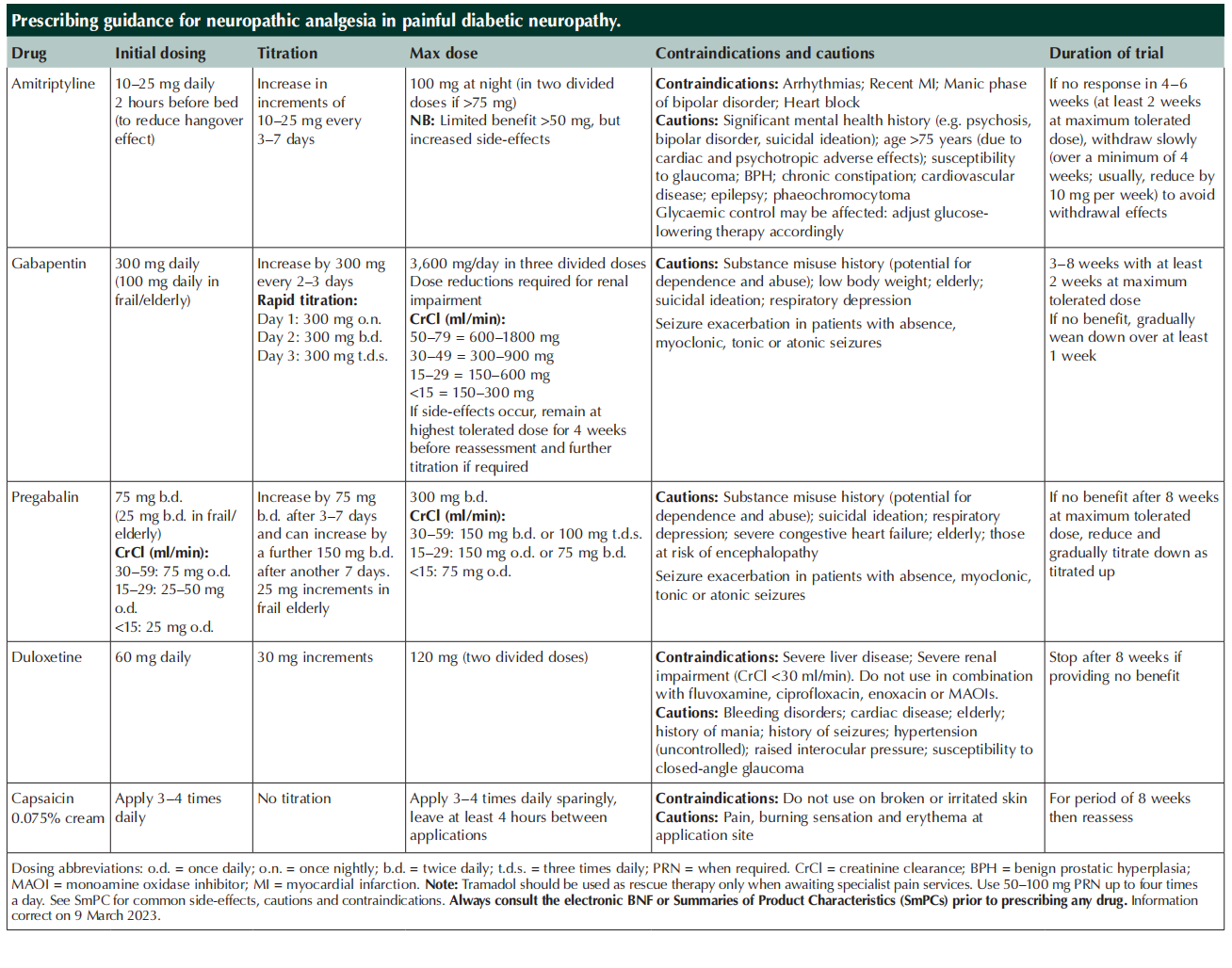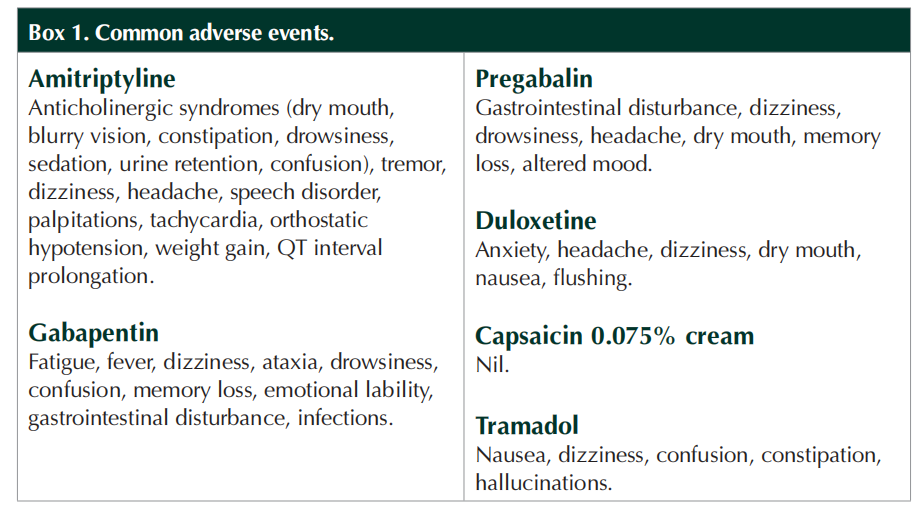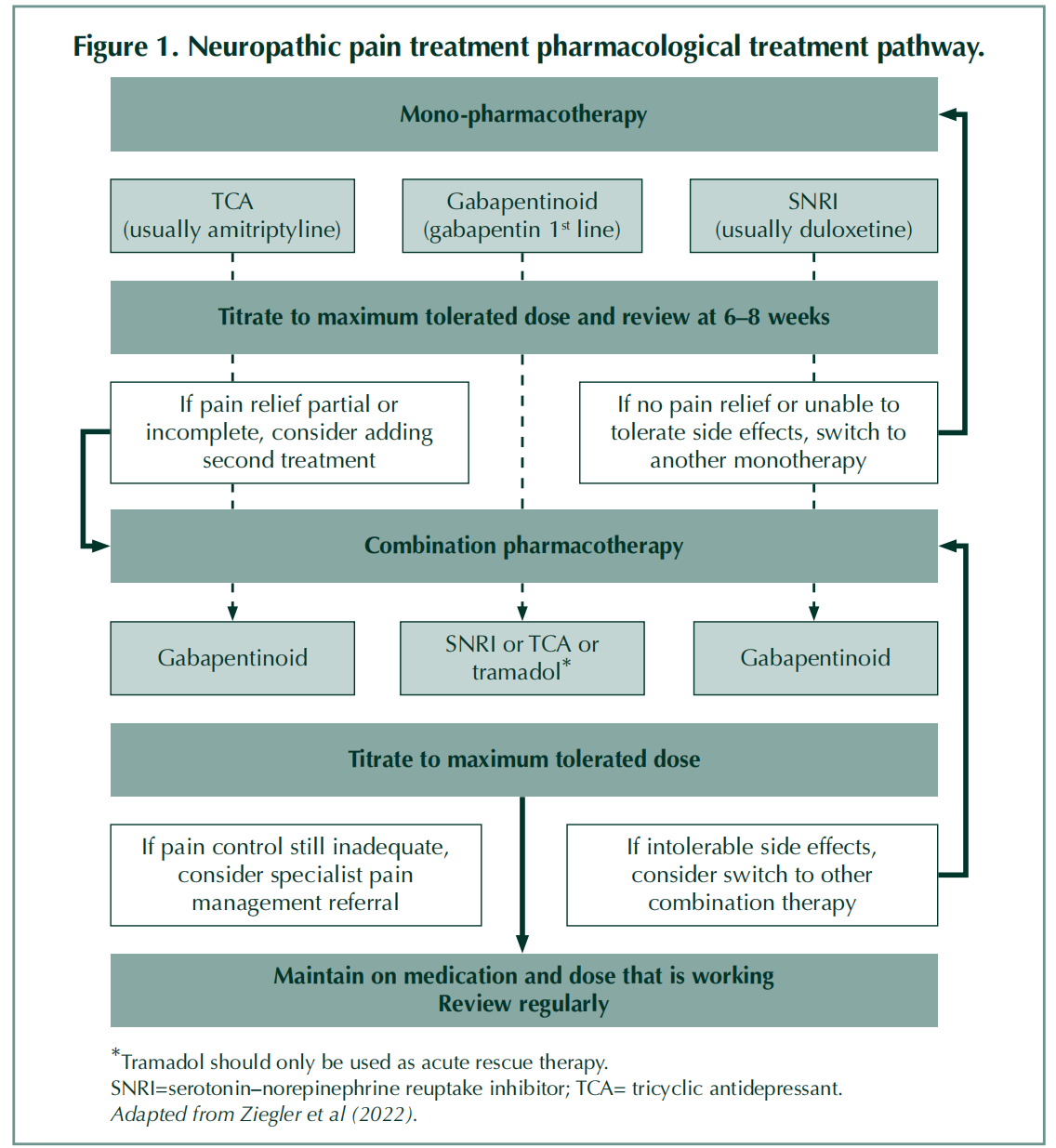Diabetes is one of the most common long-term health conditions in the UK (National Institute for Health and Care Excellence [NICE], 2015). It is estimated that over 4.3 million people in the UK have a diabetes diagnosis in 2021/22 (Diabetes UK, 2023). Diabetic neuropathy is one of the most prevalent chronic complications in people living with diabetes, with an estimated lifetime prevalence exceeding 50% (Pop-Busui et al, 2022).
Diabetic neuropathy covers a wide range of neuropathic conditions, with the most common being diabetic peripheral neuropathy (DPN), which also has the largest evidence base for therapeutic treatments. Approximately 30% of all individuals with DPN will experience painful symptoms that will require pharmacological and other treatments (Pop-Busui et al, 2022). The pain associated with DPN is often described as tingling, burning, shooting or stabbing, and can be associated with paresthesias, dysesthesias, sensory ataxia or numbness (Pop-Busui et al, 2017). Neuropathic pain is typically worse at night and may be accompanied by hyperalgesia and allodynia and can lead to reduced quality of life, sleep disturbance, increased morbidity and mortality (Pop-Busuiet al, 2017; 2022).
Painful diabetic neuropathy is difficult to manage clinically, and there are a variety of pharmacological and non-pharmacological options that are available. This article will consider the pharmacological approaches.
The aim of treatment should be to improve quality of life for people living with painful diabetic neuropathy by reducing pain and promoting increased participation in all aspects of daily living.
NICE (2013) recommends offering a choice of amitriptyline, duloxetine, gabapentin or pregabalin as initial treatment for neuropathic pain. The American Diabetes Association guidelines also recommend gabapentinoids and serotonin-norepinephrine reuptake inhibitors (SNRI) as first-line treatments (Pop-Busui et al, 2022) While acknowledging the effectiveness of tricyclic antidepressants, these guidelines are more cautious of their use, due to anticholinergic side-effects and increased risks for those with ischaemic heart disease and glaucoma (Pop-Busui et al, 2022).
When choosing which medication to select first line, consider the patient’s current symptoms and other comorbidities. Contra-indications and cautions to using each of the different types of medication are listed in Table 1.

Pregabalin is a gabapentinoid and has been shown in many studies to be effective for painful neuropathy and evidence suggests a dose-dependent response, with weaker effect at lower doses (Pop-Busui et al, 2022). However, up-titration of the dose is recommended to reduce adverse effects. Because pregabalin additionally has anxiolytic activity, it may be particularly helpful in individuals with marked anxiety, which is not uncommon among people experiencing neuropathic pain (Pop-Busui et al, 2022).
Gabapentin has also been shown to be effective in painful neuropathy. It does have a shorter half-life and, therefore, needs to be given more frequently (PopBusui et al, 2017). Gabapentin has similar adverse effects to pregabalin (Box 1). Gabapentin is not always well tolerated and pregabalin may then be considered. Down-titration of gabapentin followed by initiation of pregabalin can be considered, but a conversion for immediate switching is shown in Table 2.


Amitriptyline is the most commonly used tricyclic antidepressant (TCA) for painful neuropathy. It is also the TCA recommended by NICE, while others, such as nortriptyline, are also used for pain management (NICE, 2013). Amitriptyline and other TCAs have been used for many years to manage neuropathic pain and studies have proven it to be more efficacious than placebo (NICE, 2013). Given amitriptyline’s side-effect profile (Box 1), it is not always well-tolerated and must be avoided in certain conditions (Table 1).
It is recommended that if the initial treatment offered is not effective or is not tolerated, then one of the remaining three drugs is offered, and consider switching again if the second and third drugs tried are also not effective or not tolerated. Overall, only 50% of subjects with painful diabetic neuropathy respond to monotherapy. Therefore, combination pharmacotherapy maybe required in patients who have only partial response or in whom the drug cannot be further titrated due to intolerable side effects (Ziegler et al, 2022). Figure 1 shows how this stepwise approach should be conducted.

Other pharmacotherapies to consider are opiates and topical treatments. NICE recommends that tramadol is only considered if acute rescue therapy is needed. Although tramadol has some efficacy in the management of neuropathic pain (NICE, 2013), the associated risks of addiction, abuse and side-effects have meant it has been recommended for short-term use only.
Capsaicin cream can be considered for people with localised neuropathic pain who wish to avoid, or who cannot tolerate, oral treatments and has been shown to have some efficacy (NICE, 2013).
Pharmacological treatment is only one aspect of the treatment of painful diabetic neuropathy and should always be considered alongside non-pharmacological treatments to gain the best outcomes for patients. Diabetes prevalence is increasing and other than slowing progression through glucose management and lifestyle advice we only have symptomatic treatments available to use currently. It is imperative that we use the evidence base available to us when both diagnosing and treating the symptoms of painful diabetic neuropathy, given the significant impact it can have on quality of life.
References
1. Diabetes UK (2023) How many people in the UK have diabetes? Available from: https://www.diabetes.org.uk/professionals/position-statementsreports/statistics (accessed 16.6.2023)
2. National Institute for Health and Care Excellence (2013) Neuropathic pain in adults: pharmacological management in non-specialist settings. NICE, London. Available from: https://www.nice.org.uk/guidance/cg173 (accessed 16.6.2023)
3. National Institute for Health and Care Excellence (2015) Type 2 diabetes in adults: management [NG28]. Updated June 2022. NICE, London. Available from https://www.nice.org.uk/guidance/ng28 (accessed 16.6.2023)
4. Pop-Busui R, Ang L, Boulton AJM et al (2022) Diagnosis and treatment of painful peripheral diabetic neuropathy. American Diabetes Association. Available from: https://diabetesjournals.org/DocumentLibrary/ Compendia/ada_2022_neuropathy_compendium_fin-web.pdf (accessed 16.6.2023)
5. Pop-Busui R, Boulton AJM, Feldman EL et al (2017) Diabetic neuropathy: a position statement by the American diabetes association. Diabetes Care 40(1): 136–54
6. UK Medicines Information (2012) How do you switch between pregabalin and gabapentin for neuropathic pain, and vice versa? Available from: https://studylib.net/doc/7855973/switching-between-pregabalin-and gabapentin (accessed 16.6.2023)
This article is excerpted from the The Diabetic Foot Journal Vol 26 No 1 2023 by Wound World.


